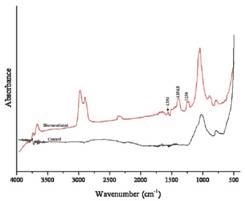Biomineralization Based Remediation of As(III) Contaminated Soil by Sporosarcina ginsengisoli
2012-03-09
Arsenic (As) is a highly toxic semi-metallic element and of global concern. The most common and toxic arsenic species observed in the environment is the trivalent form arsenite [As(III)]. As(III) is highly mobile in soil and leached easily into groundwater. The current remediation techniques are not sufficient to immobilize this toxic element. But biomineralization based microbially induced calcite precipitation (MICP) seems to be a promising technique to remediate arsenic from contaminated environments with additional advantages on current bioremediation techniques.
Dr. Varenyam Achalathe investigated the ability of a novel indigenous bacterium Sporosarcina ginsengisoli in the remediation of As(III) contaminated soil. A five-step Tessier sequential extraction procedure to analyze the geochemical speciation of As and investigate the bioremediation efficiency by bacterial isolate was adopted. To measure the efficiency of microbially induced calcite precipitation, the biomineralization products were characterized by Attenuated Total Reflectance Fourier Transform-Infra Red (ATR-FTIR) spectroscopy and X-Ray Diffraction (XRD) analyses. For the first time MICP based remediation of As contaminated soil has been studied applying S. ginsengisoli.
The bacterium was able to grow at high As(III) concentration of 50 mM. Arsenic mobility was found to significantly decrease in the exchangeable fraction of soil and subsequently the arsenic concentration was markedly increased in carbonated fraction after bioremediation. MICP process in bioremediation was further confirmed by ATR-FTIR and XRD analyses. XRD spectra showed presence of various biomineralization products such as calcite, gwihabaite, aragonite and vaterite in bioremediated soil samples. The results from this study have implications that MICP based bioremediation by S. ginsengisoli is a viable, environmental friendly technology for remediation of the arsenic contaminated sites.
This work was supported by Knowledge Innovation Program of Chinese Academy of Sciences (KZCX2-YW-335), Program of 100 Distinguished Young Scientists of the Chinese Academy of Sciences, National Natural Science Foundation of China (U1120302, 41150110154, 40673070 and 40872169) and Chinese Academy of Sciences Fellowships for Young International Scientists (2010Y2ZB04).
The result has been published on Journal of Hazardous Materials, 2012, 201-202: 178-184. The paper is also archived at http://www.sciencedirect.com/science/article/pii/S0304389411014476.

FTIR analysis for the bioremediated As contaminated soil samples by S. ginsengisoli CR5 and comparison with control



